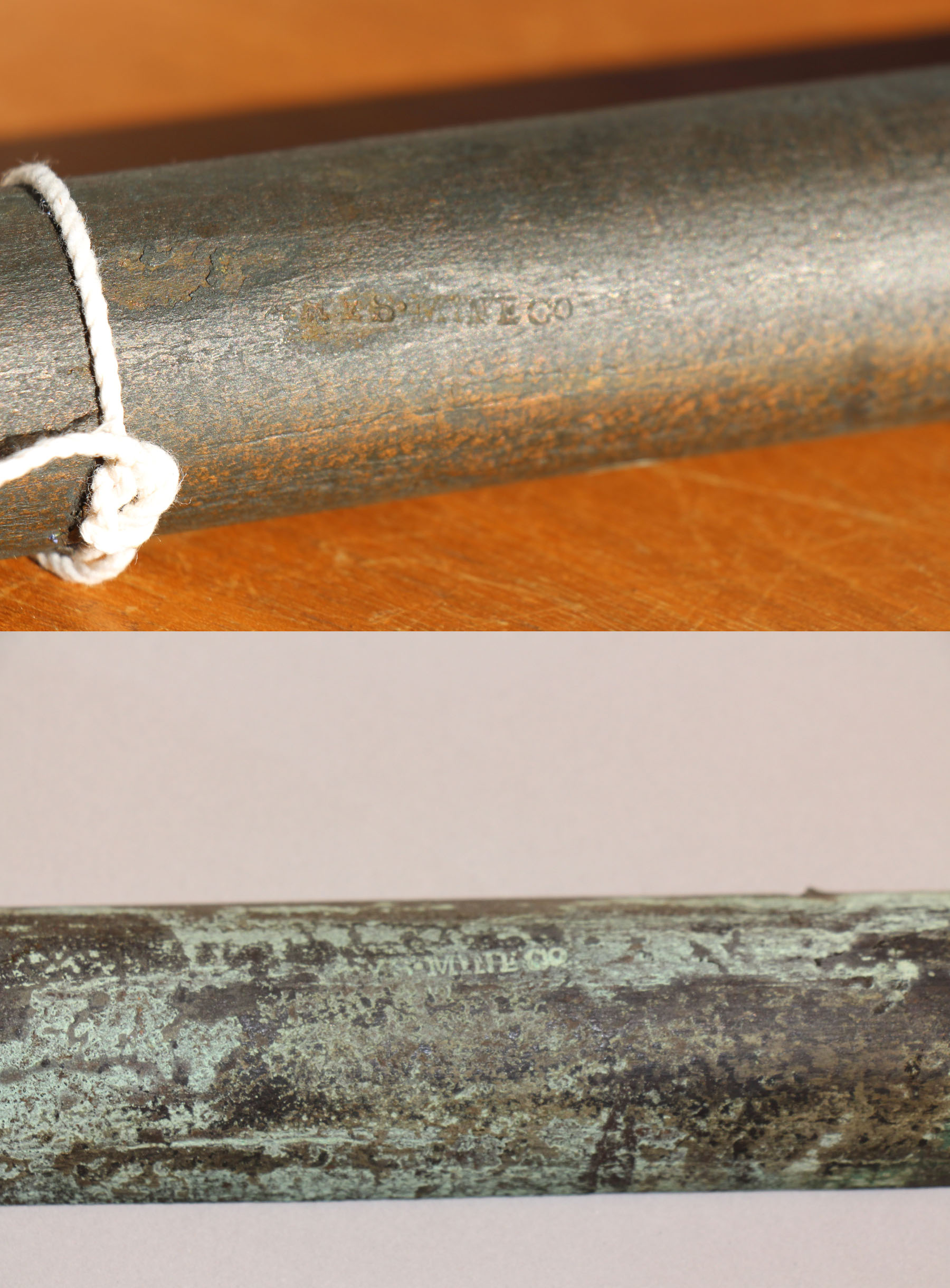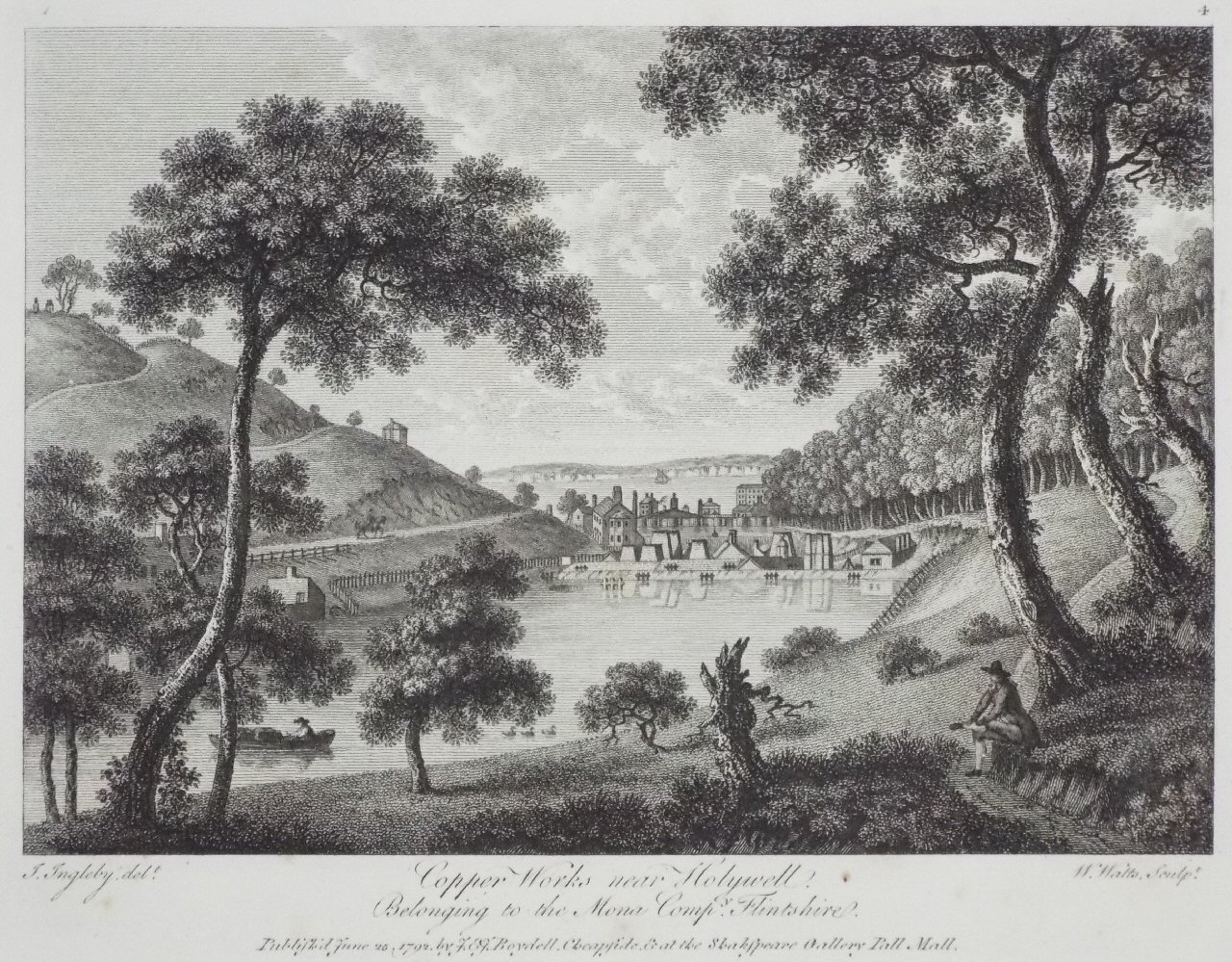Sometimes history doesn’t cooperate. Just when you think you’ve settled on a comfortable narrative of events, another stray fact, another small detail formerly overlooked appears to sabotage your conclusions. We’ve recently experienced this in spectacular fashion.
Last year, we wrote a post detailing the saga of the copper bolts used to construct Constitution in the 1790s. For years, many people assumed these bolts had been manufactured by Paul Revere. Additional research revealed that he could not have made the bolts, but that he was hired to reduce the diameter of the British-made bolts by half an inch. At the same time, we were certain that a number of bolts drawn out of Constitution’s keel in the 1990s were, in fact, some of the very same bolts Mr. Revere had reduced in 1795.
And here things stood until last fall, when we were paid a visit by Peter Holt and Mallory Haas, two archaeologists working for the The SHIPS Project (that is, the Shipwrecks and History in Plymouth Sound project). During a survey in 2012, the team discovered the remains of HMS Amethyst, a frigate lost in 1811 on the shores of Jennycliff Bay, on the northeast side of Plymouth Sound. Archaeologists recovered a number of artifacts from the wreck, including some copper fittings marked with the manufacturer’s name.
Curious to have a look at the bolts drawn out of Constitution’s keel, we all piled into the museum’s collection storage. As soon as we put the bolt down on the table, we noticed a curious marking on one side. We’d examined this artifact many times, and yet had never noticed this detail! Though covered in verdigris, here were letters stamped into the copper. The first part of the inscription seemed to be abraded, but the remaining letters clearly spelled “YS·MINE CO.”
Remarkably, inspection of a second bolt removed from the ship at the same time revealed the same marking. Suddenly, the carefully constructed story of the bolts’ origins had to be discarded. Any attempt to reduce the diameter of these bolts would have eradicated the marking, so clearly these could not have been manufactured or reduced by Paul Revere. Could they even be as old as the 1790s? A search of US Navy copper contracts failed to turn up any company with a name that matched, so we began to look at British manufacturers instead.


By 1780, the Royal Navy and the British merchant fleet had a ferocious appetite for copper. Sheathing, bolts, nails, rudder fittings, and a whole host of other ship fittings were made of the metal. In that year one Thomas Williams, Esq. erected an extensive range of buildings for finishing copper fittings near the mouth of a dammed stream that emptied into the estuary of the River Dee.
A description of the place in 1796 gives a sense of the extent and importance of the Parys works.
In this department is a great forge for heating the cakes of copper, previously to their being beat into pans, or rolled into sheathings, &c. &c. The Wheels and machinery are set in motion by the water from a large pool, parallel to the road, which is filled from the stream, and let out by another channel to effect its purposes.
These may be called the great magazines for the supply of the royal navy with the various necessaries in copper, such as sheathings, bolts, and nails. Some of the bolts are twenty feet long, and so hardened by rolling and battering, as to be capable of being driven almost to their heads, in the entrance forward, and run abaft of the ships where the beds of timber are the thickest; which work is facilitated by boring with an auger two-thirds of the length. Some of the nails are a foot in length, and from that size to that of a sadler’s tack.
Rudder bands and braces are here made of an enormous size; some, designed for the largest first-rates, weighed one ton fourteen hundred.
The number of men employed in these works is ninety-three. This is intended when they are in full employ: the same must be understood of all the rest. .
The head of water to this mill is about twenty-one feet and a half, and the superficial surface of the pool about 112,028 feet.
The trade of these works is not confined to the royal navy. The merchant ships are from hence supplied with considerable quantities of sheathing, bolts, and nails, as are many of the ships in the service of the East India Company.
From hence braziers are furnished with copper vessels of all kinds, and the materials for all the copper branches of their business.
The works on this river are supplied with their copper from the Parys mine and Mona mine companies, the ore of which is smelted chiefly at Ravenshead, and Stanley, in Lancashire.1


But how did a product of the Parys Mine Company end up in Constitution’s hull? Unfortunately, so far we’ve only been able to establish that the US Treasury Department ordered copper bolts from Britain in 1795. These were shipped from Liverpool, which was only a short distance from the Parys copper works. Beyond this, we’ve been unable to discover contracts, receipts, bills of lading or other documents that might shed more light on the copper manufacturer who supplied the bulk of the bolts and sheathing for the new frigates. Nevertheless, the Parys Mine Company stamp on the two Constitution bolts prove that at least one of the shipments came from Wales. It also proves that you never know what you are going to discover when you keep your eyes open!
1 Thomas Pennant, The History of the Parishes of Whiteford and Holywell (London: B. and J. White, 1796), 204-205.
The Author(s)
Matthew Brenckle
Research Historian, USS Constitution Museum
Matthew Brenckle was the Research Historian at the USS Constitution Museum from 2006 to 2016.
